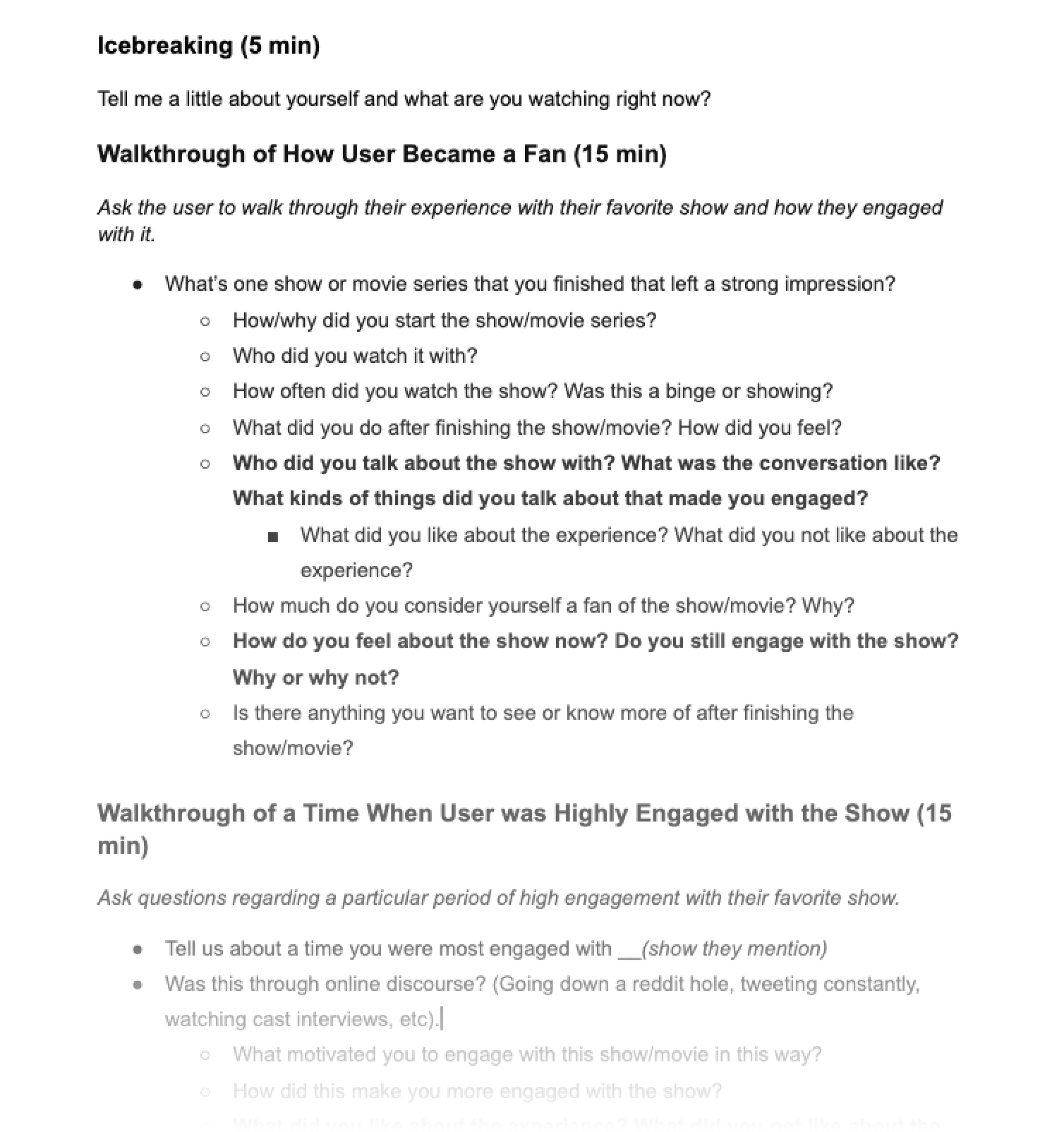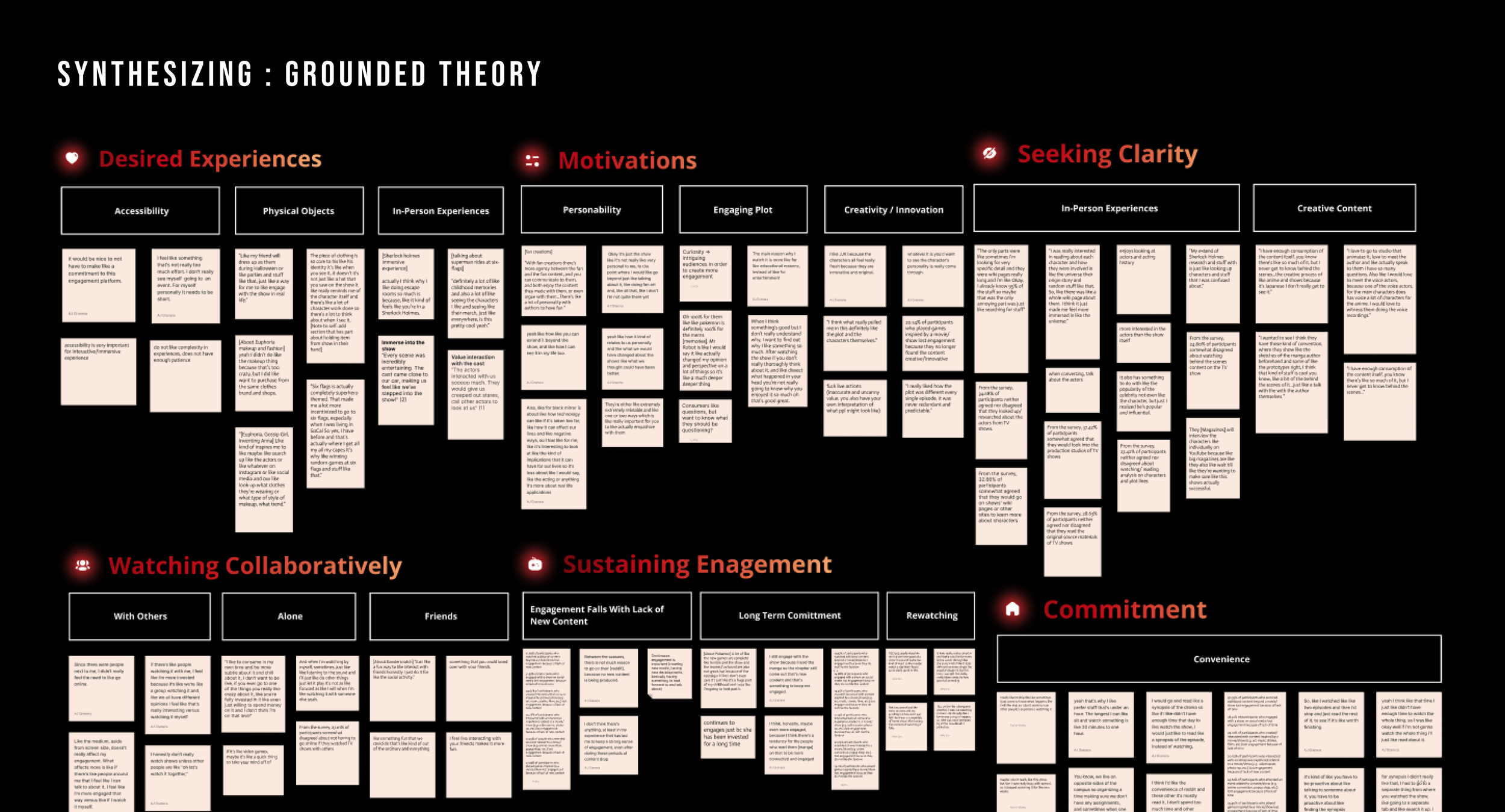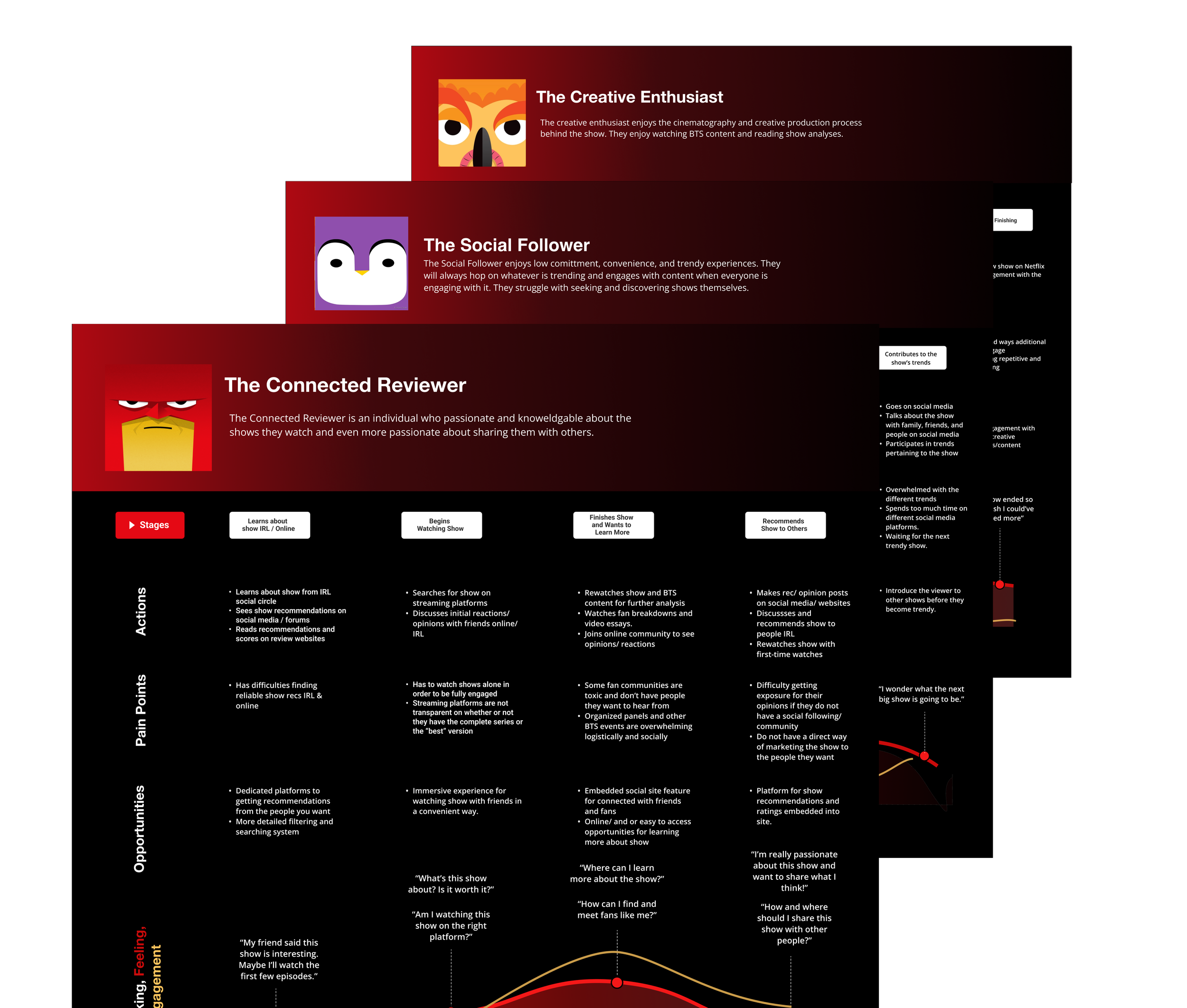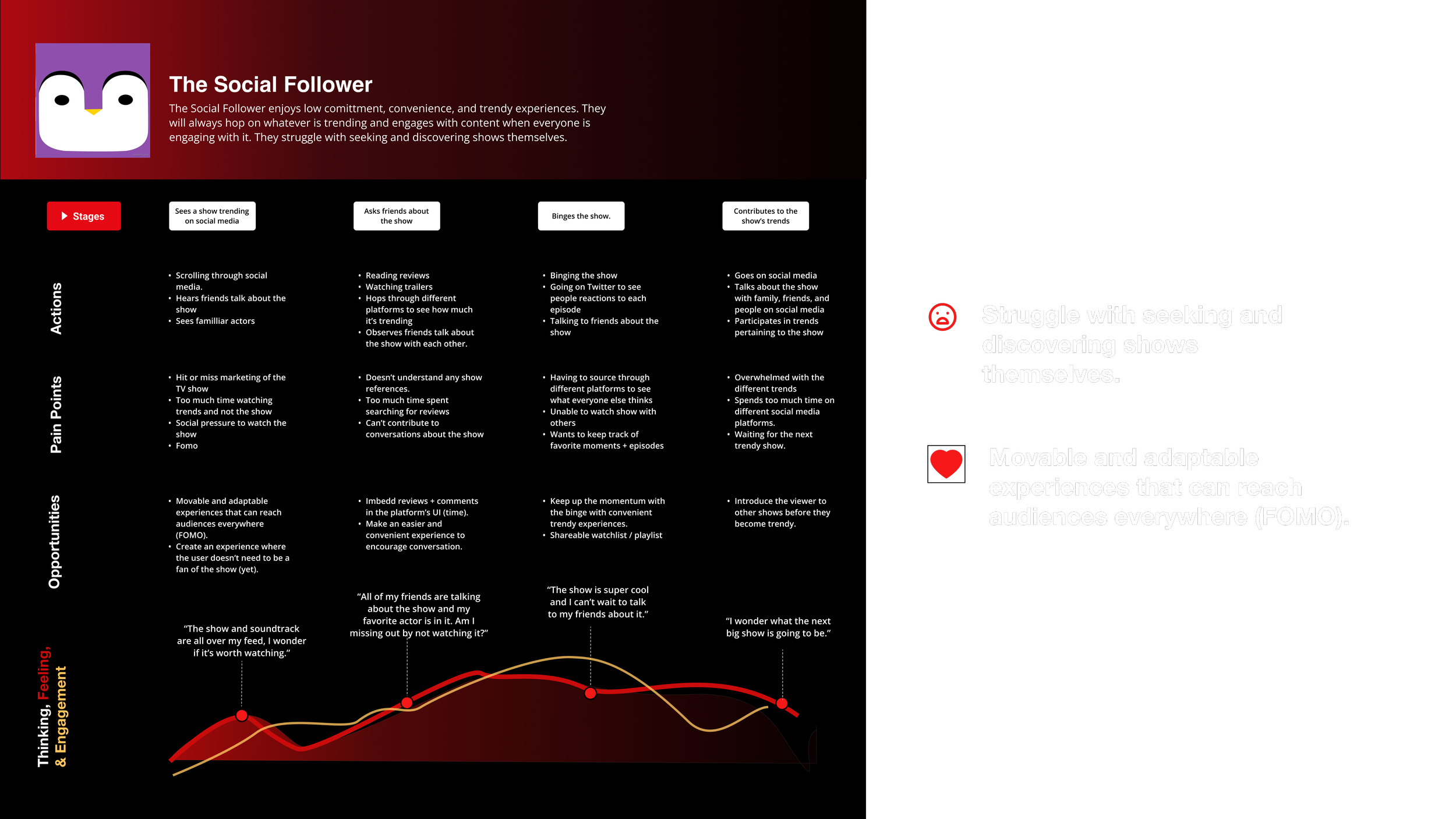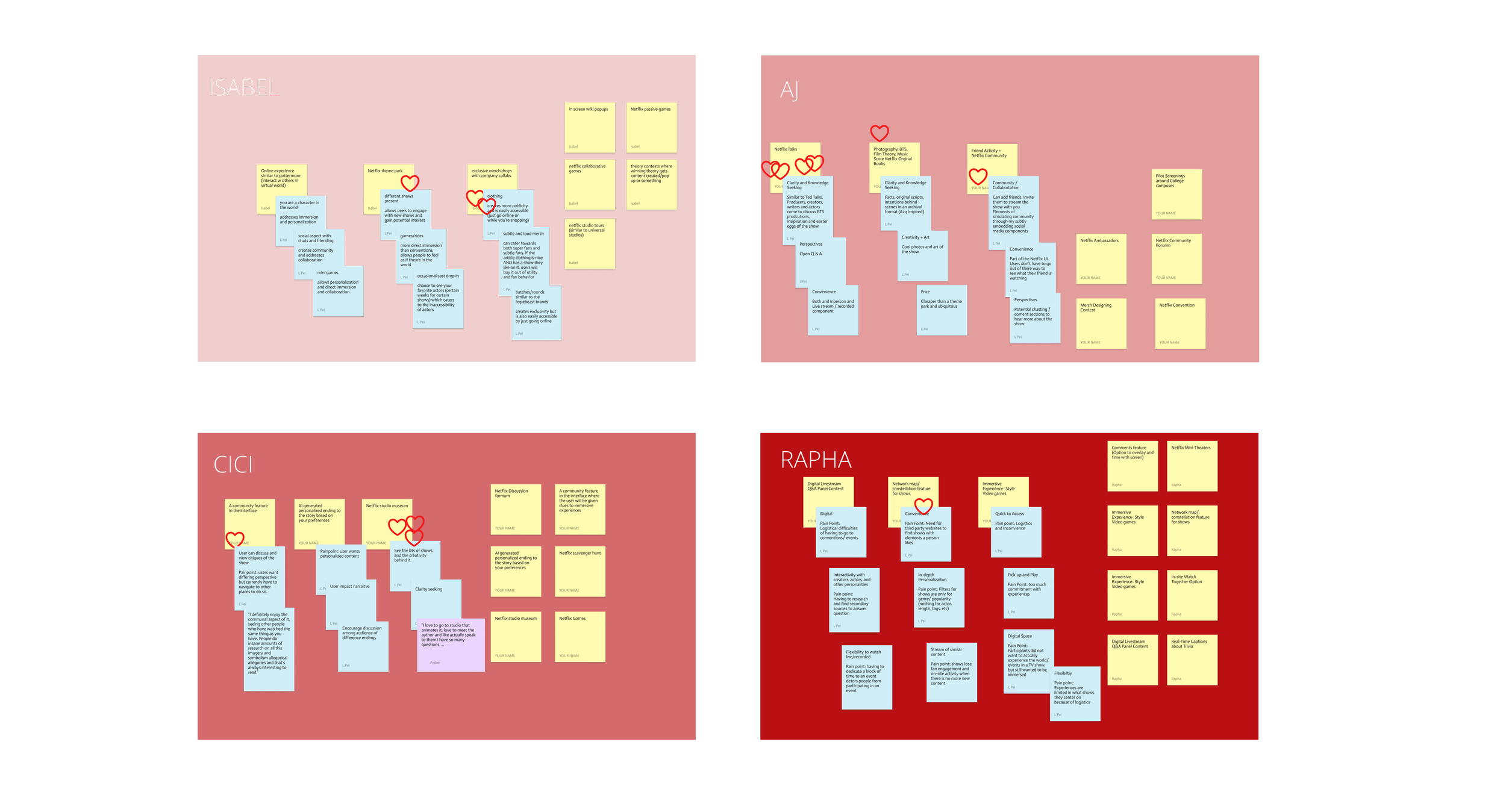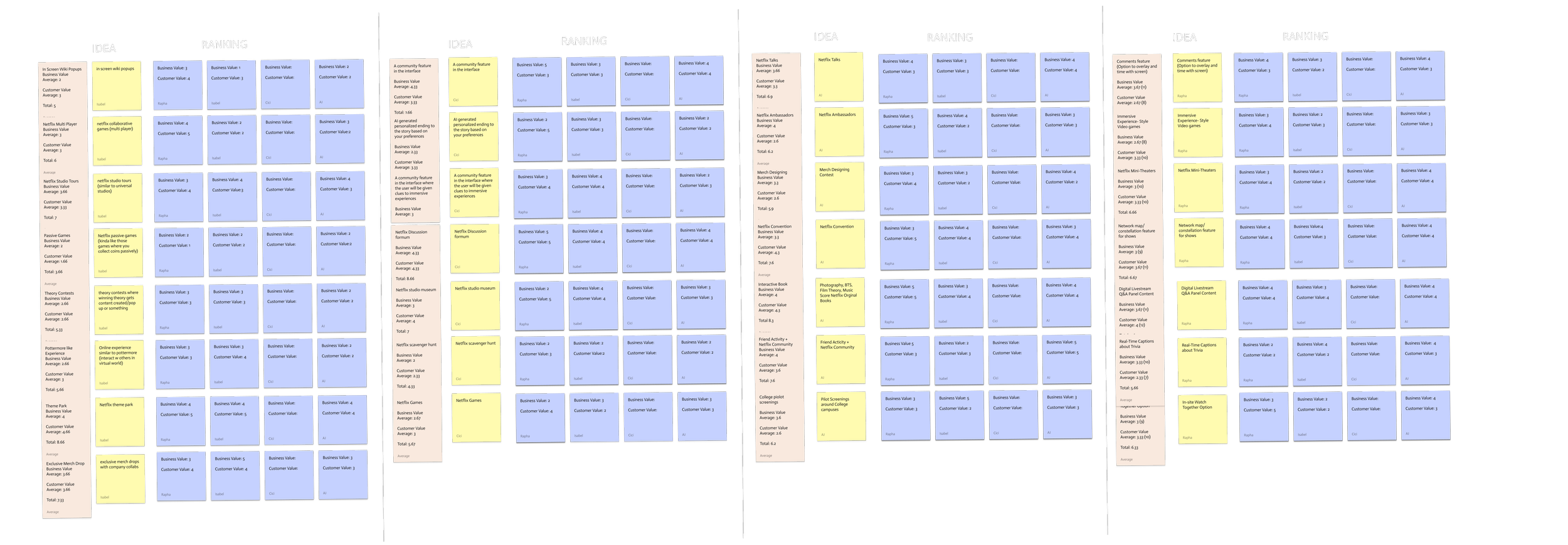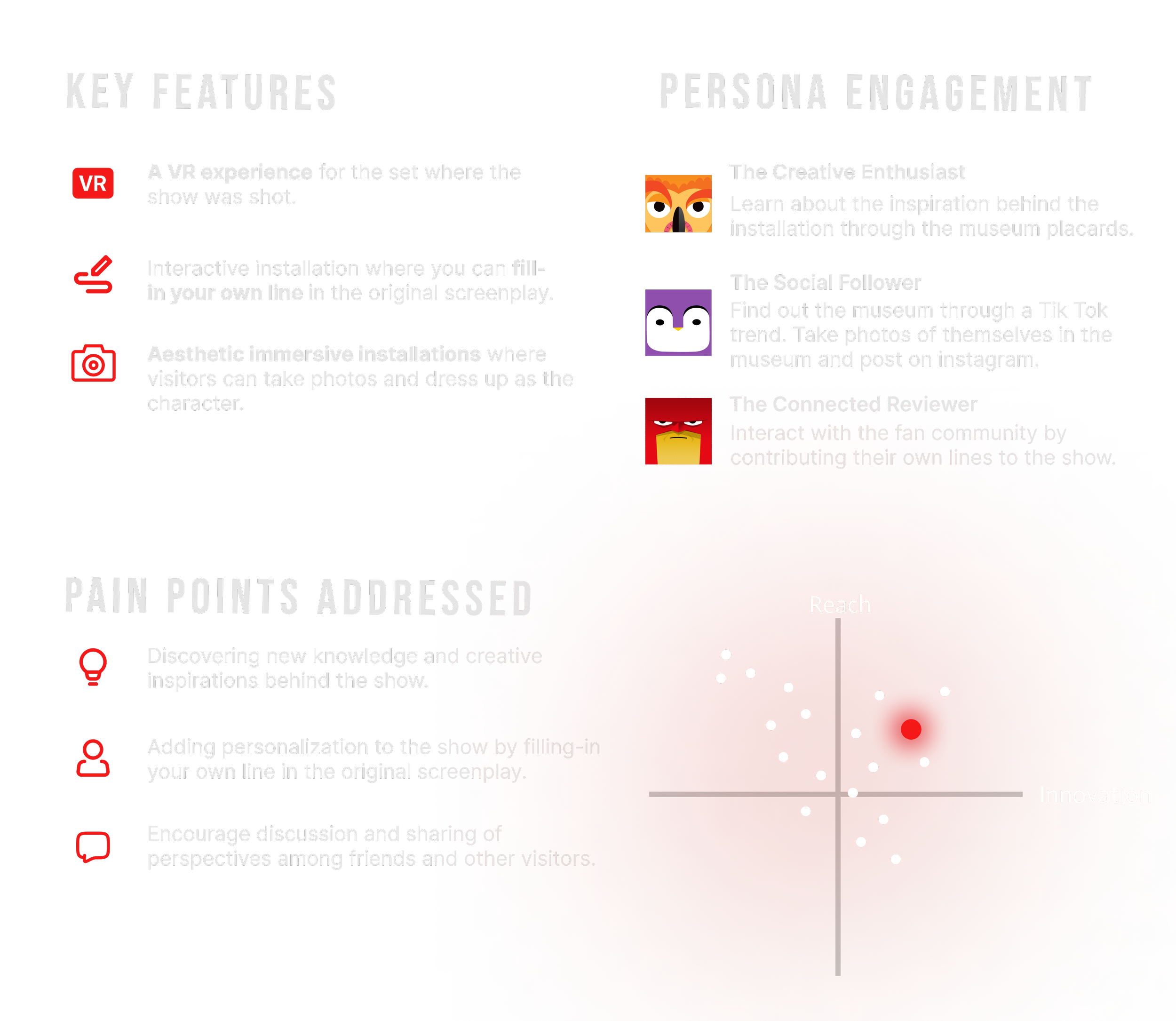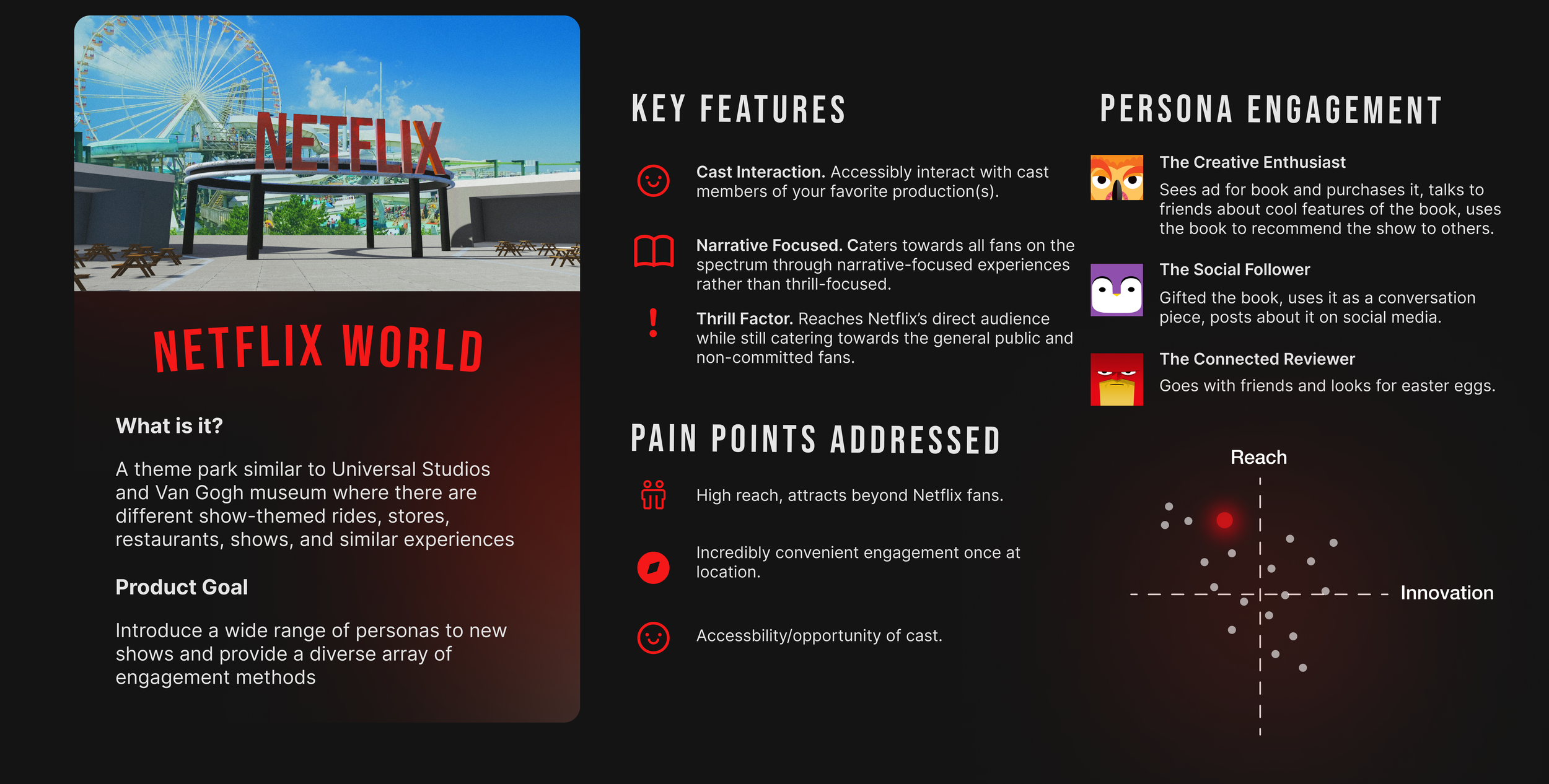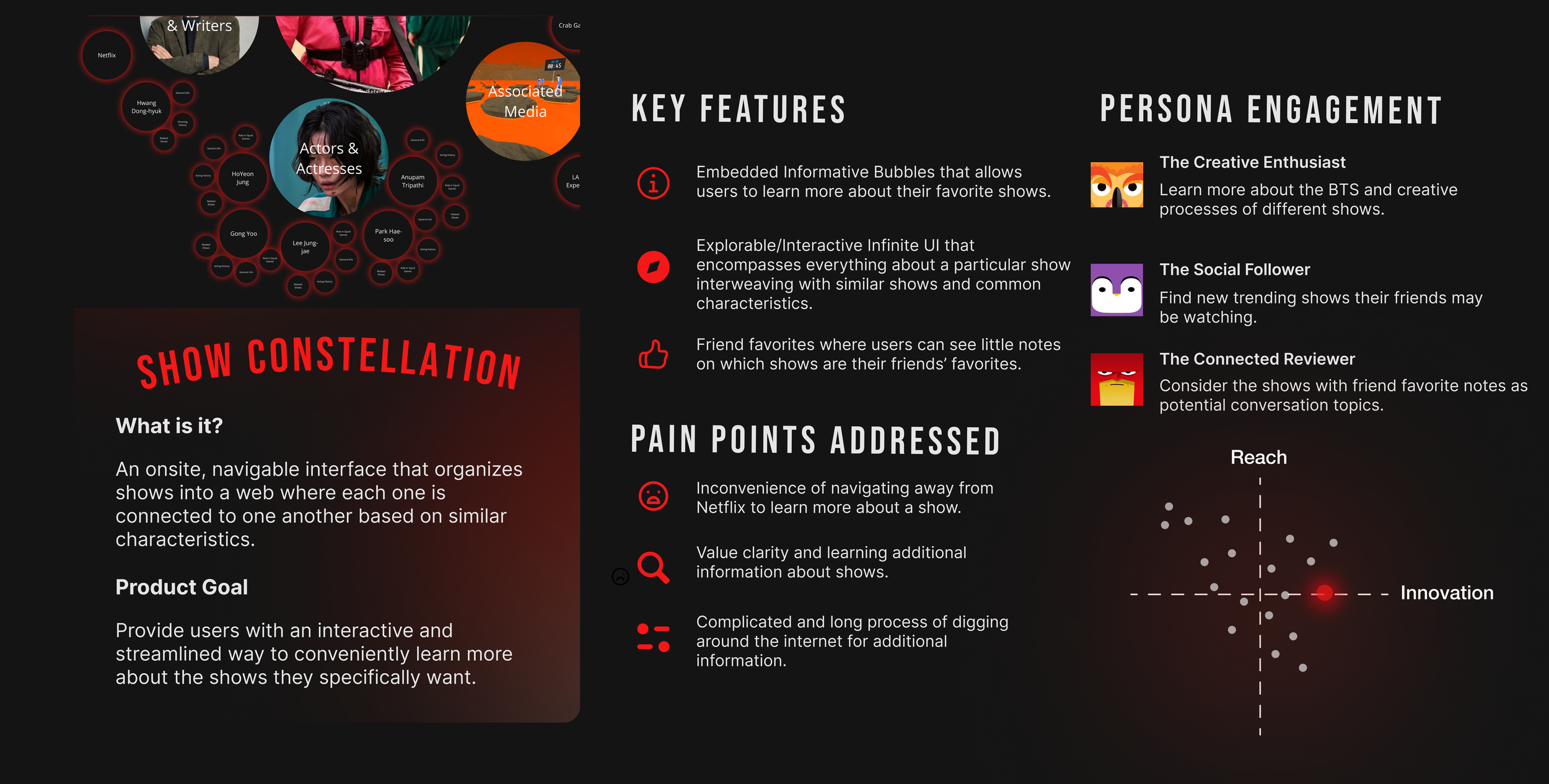Netflix Interactive Experiences
Researched Netflix users’ demands for interactive experiences and designed 4 experience concepts to foster meaningful user engagement.
Role: Design Consultant, Research Lead
Project Type: UX Research, Concept Design
Team: Me, Isabel Zheng, Aaraam Granera, Rapha Felipe, Jasmine Chen,
Duration: Feb - May 2022
Project Summary
In Feb 2022, we partnered with the User Experience Team at Netflix for a project around show-related immersive experiences. With the guidance of our industry partner, we went through the human-centered design process and arrived at 4 final experience solutions for the Netflix audience.
Over the course of 16 weeks, I conducted extensive user research with my team to understand the motivation behind engaging in additional show-related experiences.
The Ask
How might we increase user engagement through meaningful show-related interactive experiences?
Final Solutions
A peek at our 4 interactive experience concepts designed for 3 different engagement types.
The Process
Click to jump to a particular section.
The Problem
With the success of mega-hit shows like Squid Game, Netflix is hoping to retain the audience's excitement for the show past the initial hype.
To achieve this, Netflix is interested in using the novel medium of immersive and interactive experiences to reach and engage with their audience beyond their web interface.
Competitor Analysis
To gain a general understanding of the immersive experience landscape, we looked at 8 competitors and generated 2 insights regarding what constitutes an enjoyable experience. Tools we utilized include user study reports provided by Netflix and online reviews left by immersive experience audiences.
How did we arrive at these solutions? The 3 months process started with….
Part 1: Research
After getting a general sense of the immersive medium, we wondered…
what are the underlying values behind immersive and interactive experiences?
Leading user interviews
I lead the team to develop a user interview guide and spearheaded the recruitment of 14 interviewees through Twitter, Reddit, Discord, and Facebook. To create engaging experiences, we needed to know why viewers seek them out and what internal needs these experiences are fulfilling.
A snippet of the interview guide
Challenge:
Which show-watching experience should we ask about given that viewers usually have watched multiple shows in the past?
Through 2 rounds of iteration on the guide, I chose to focus on a time when the viewer was highly engaged with the show. My hypothesis was that viewers are more likely to attend shows-related experiences for shows that they feel invested in.
Part 2: Synthesizing key design principles for immersive experiences
To make sense of the data gathered from user interviews and remove potential biases, our partners from Netflix’s user research team introduced a synthesis method called “grounded theory”.
Using grounded theory’s iterative, bottom-up approach, we synthesized user interview data into 30+ categories.
Since the categories naturally emerged from clustering similar interview quotes, we minimize preconceived biases since all quotes and potential themes are considered in the clustering process.
Mass Survey
After coding interview transcripts and sorting them into 50+ themes, we found ourselves a bit overwhelmed…
There are a lot of factors that constitute a good immersive experience, but which factors should we prioritize?
To answer this question, we conducted a unmoderated mass survey to give a quantitative ranking to the preferences and validate/refute some qualitative data we gathered during interviews.
Key insights/design principles
After synthesizing interview data and prioritizing the most important factors through the mass survey, we arrived at 4 main insights that became our design principles later on when designing immersive experiences.
Part 3: Constructing personas
Informed by our research, we built 3 fan personas that later helped us design experiences that tailor to different fan behaviors and interests.
From our user interviews, we learned that users vary in their engagement levels, dedication, and commitment to the show they are watching. Thus, we constructed a fan continuum from casual to dedicated and crafted 3 fan personas to represent 3 different common engagement types.
User Journey Maps
To find out the unique pain points these personas encounter in their show-watching experience, we constructed user journey maps to understand their thoughts and feelings at different stages and, more importantly, the opportunity for a better experience at each of the pain points.
With all the research in our back pockets, we started ideating immersive experiences that would fit our personas’ needs.
We did one round of rapid ideation to entertain all possible ideas through divergent thinking.
Part 4: Ideation
Evaluating Ideas
With 4 figjam boards filled with ideas, we needed to come up with some metrics to evaluate them and narrow them down.
We took a 3-step approach to evaluate the ideas against both Netflix’s core principles as well as insights found during research.
Business vs Customer Value
Reach vs Innovation
Designing for Personas
Final Solutions
After narrowing down our solutions using the 3 metrics, we arrived at 4 final solutions of varying engagement levels for all 3 of our personas.
Among the 4 solutions, I led the Netflix Museum idea, which is an interactive experience that showcases the creative process and inspiration behind the show.
When I presented the Netflix Museum solution to some Netflix viewers for quick user testing, they were very excited about the interactive and aesthetic aspects of the museum. Nonetheless, some expressed concerns about going to a museum as a large time commitment, which validates the importance of convenience as we discovered during research.
Other solutions
Taking into account of accessibility and convenience of the experiences, I helped designed 3 other solutions that vary in the level of engagement required from the user.
Reflection
Learned UX research techniques: how to minimize bias in data collection and synthesis
I feel super grateful to have had the opportunity to work with and be guided by a team of amazing UX Researchers at Netflix for this project. Through our bi-weekly interactions, I learned various research techniques like grounded theory for synthesizing research data to limit bias, and how to structure user interviews and ask questions that yield quality answers.
The challenge of navigating subjectivity in preferences of immersive experience
One major challenge I encountered while working on the project is that preferences in entertainment experiences, the type of experience we tried to design, can be very subjective.
To overcome this challenge, I reminded myself throughout the project to dig beyond what the participants say they prefer and search for commonalities in the underlying value that the experience brings. By connecting the underlying values, theme like “perspective”, and “clarity” emerges, allowing us to design solutions for a boarder audience.




